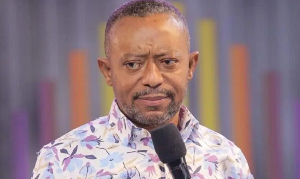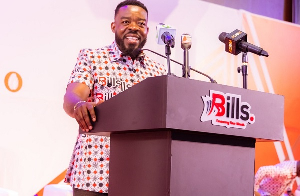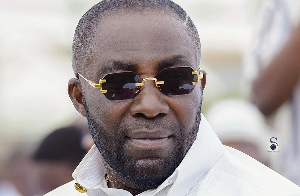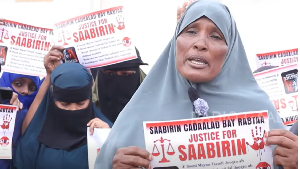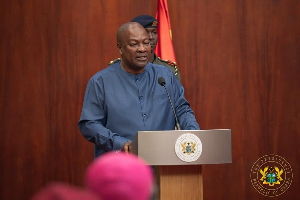By: Prof Lungu
"...According to Ghana's GRIDCO, the annual cost of fuel alone for thermal power plants in Ghana is about $1,140 billion. In 5.5 years...fuel alone would require $6,270 billion... Now, only 1,500 megawatt (MW) or 51 per cent of the country’s 2,936 MW installed capacity of power is currently available...due to government’s inability to purchase light cycle crude oil to power the thermal plants...So... how is it that Nkrumah's Ghana...cannot prioritize $345 million (5.5% of fuel expenditure during 5.5 years) for a 325MW Solar Power facility...with a useful life no less than 25 years that would pay off in 12.5 years and in addition, add almost 25% to current available power....all fuel-free? The facility could help stabilize industrial/commercial/emergency power requirements...and add to the socio-economic-gain baskets, if we still care...", (Prof Lungu, 26 Oct 15-rev).
Mr. Patrick Asare responded to our critique of his love affair for "Obroni WaWu Coal" with an article still on Graphic.Com as of this writing. In that article, Mr. Asare tells the world we got it all wrong. He says he and his employer have no conflict of interest because they do not sell coal in America. For Mr. Asare's own sake, we will leave his employer out of this matter. Fact is, "where we come from", you do not conflate your personal business activities with your employer's. That is, unless it is official business, or those activities reflect very well on your employer's business, their bottom-line, or public goodwill.
The fact that Ghana has a persistent energy problem, or that when you went to Ghana recently you experienced power outage while residing in your "brothers house" does not mean that Ghana ought to throw caution to the wind and spend enormous amount of money ("loan money", we must emphasize), on economically, environmentally, socially, wasteful coal power plants and facilities. This is especially the case when Ghana could use practically the same amount of resources to produce more sustainable power (solar energy, as we've long argued with real data and sources, more than once on this and other pages).
Just Google "Prof Lungu"+Solar+Energy+GhanaHero!
To the point, because we've published so much material on this topic on GhanaHero and elsewhere, we are not going to address several of Mr. Asare's idiosyncratic complaints about our critique of his paper.
Not this time, anyway!
In the 2015 "State of the Nation" speech, President Mahama provided pointers to the energy plan ahead for Ghana. Given what we know and what we have already argued, the 750MW Sunon Asogli Coal-Fired plants manufactured and funded by the Chinese is still not a brilliant investment in the mix of the 3,665 MW projected for Ghana in the medium-term.
They will be sub-par power and energy facilities, like Bui Hydro Power!
In the main, even a 500MW Solar Power facility would have been a better bargain for Ghana in the medium-to long-term.
The savings and payback are a no-brainer, with respect to SOLAR! (Read more of our papers all over the internet).
Another case!
Directly north of Ghana, along Latitude 0 degrees (Greenwich Meridian), exactly in Africa, Morocco, just last month, on 6 February to be exact, switched on a 160MW Solar Power Plant. It is the first phase of a 2GW Solar Power Project that, when completed, will be the world's largest concentrated solar power plant in all of Africa and the Middle East.
As reported in Sustainnovate.AE by H. Lindon:
"...Construction on the first phase of the enormous grid-connected project began about 4 years ago. The next two phases of the project -- each scheduled to total 350 MW -- are expected to be completed and connected to the grid by 2018. The following phases are expected to be connected by the year 2020...Altogether, costs on the project are expected to total $9 billion by the time of completion, according to the Moroccan Agency for Solar Energy..."
If Morocco can have 2GW of Solar Power that can power more than a million modern homes for $9 billion within 10 years, how come Ghana can't have 500MW within 6 years to power Ghanaian industry, profitably?
So, if we are serious, let's hear all the numbers, VRA!
If we are serious, let's hear all the numbers, Prez Mahama!
If we are serious, let's hear all the numbers, Mr. Patrick Asare!
After all, you've implied more than once that you have all the numbers to justify assigning your love affair with "Obroni Wawu Coal", directly to Ghana's bottomline!
Tell us, Mr. Asare!
In 10-15 years, how does costs in plant, fuel, operations, maintenance, security, and other risks for South African coal at/by Sunon Asogli compare to a 750MW Solar Power Plant and facilities that utilize free sunlight as "fuel"?
Then, let's have the Mahama-Terkper economists tell us which one of the alternatives have more potential to provide more employment for Ghanaians, beyond the electricity they will each produce.
Mr. Patrick Asare, should please try harder!
In sum, this is our response this time to Mr. Asare's "latter day", reactionary papers. Bizarrely, the first paper by Mr. Asare that we read about 8 week ago even argued that Ghana's goal of 10% renewable energy was overly ambitious, unwise, and unnecessary.
To cut to the chase, we won't further indulge Mr. Asare, not in this paper, anyway.
Instead, we will reproduce Prof Lungu's "Message in a Bottle in the Indian Ocean for Mr. John D. Mahama!-v2", published on these pages, and on www.GhanaHero 28 Oct 16, just in case Mr. Asare and other like-minded people, missed it last October.
READ IT, THINK ABOUT IT OBJECTIVELY, THEN COME BACK AGAIN, IF YOU MAY.......
So it goes!
We understand that on Monday, 26 October (2015), Mr. John Dramani Mahama, President of Ghana, left Accra for New Delhi, India, to attend the 3rd India-Africa Summit, hosted by the Government of India. Our last essay in this series discussed the major strides India is making in the area of Solar Power. In addition, we mentioned we would follow it up with a discussion of some aspects of Ghana's policy on Solar Power.
Again, our reference point is the speech in 1964 during which Dr. Kwame Nkrumah of blessed memory asked Ghanaians to begin prioritizing solar energy research.
It is still serious business for us!
Unlike Ghana, India is not wasting time arranging shiny imported chairs or pushing pedestrian arguments about "clean coal", as Dr. Kwabena Donkor, Power Minister would want us to know.
No, unlike Ghana, India is moving strongly on the solar energy front!
While Mr. Mahama's Ghana was wasting time re-arranging walls and shiny chairs imported from China to create cubicles for a new Ministry of Power, Prime Minister Modi's India created a Ministry of New and Renewable Energy (MNRE) to focus Indian national policy, politics, and community, on the lofty goal to install 100 Gigawatt (100,000 MW) of solar power capacity in India by 2022.
But, within practically the same period, Ghana, already at a power deficit more that 545MW, plans to install just about 125MW of solar power by 2020. (Currently, according to the new Ministry of Power, Ghana now has just about 7.2MW of solar power capacity, and a few solar lamps for some isolated communities).
In other words, sustainable solutions for Dum-Sor in Ghana is not an option, nor a pressing alternative, as far as the government of Mr. Mahama is concerned.
And so, we foresee India swiftly creating new-economy-jobs for its citizens and beginning to arrest some of the effects of climate change through that aggressive renewable energy policy, and in the process, showing Kwame Nkrumah's Ghana what prioritizing for industrial development means today, 51 years after Kwame Nkrumah's gave the speech on Solar Power.
As we reported the last time, according to GRIDCO, the annual cost of fuel alone for thermal power plants in Ghana is about $1,140 billion. In 5.5 years, assuming prices remain stable, fuel alone would require $6,270 billion. Just 4 months ago, PEACEFM Online reported that only:
"...1,500 megawatt (MW) or 51 per cent of the country’s 2,936 MW installed capacity of power is currently available.... The reason is mainly due to government’s inability to purchase light cycle crude oil to power the thermal plants..."
So, the question is, how is it that Nkrumah's Ghana, after so much borrowing, cannot prioritize $345 million (5.5% of fuel expenditure in 5.5 years) for a 325MW Solar Power facility? This would be a facility with a useful life no less than 25 years that could pay off in no more than 12.5 years and add almost 25% to current available power (or nearly as much to current deficit of 1,436MW), all fuel free. The facility could help stabilize industrial/commercial/emergency power requirements, if we are interested, and add to the socio-economic-gain baskets, if we still care.
MESSAGE IN A BOTTLE FOR MR. JOHN D. MAHAMA:
For the wise and the prudent, your revised Laughing-Out-Loud (LOL), Six Pointers for Ghana:
1. Currently, $1 million ought to buy 1 MW of Solar Power, at an appropriate scale, and still remain scalable.
2. Currently, the Solar Power knowledge-base is not in any ECOWAS country. Rather it is in China, Italy, India, Germany, Spain, France, USA.
3. Currently, solar project ought to be feasible in Ghana under a tariff of USD$0.14 per kWh, even less as we head into 2020 due to declining cost of solar power components, including batteries for reserve power systems. Therefore, during 2015 and beyond, any Solar Power project in Ghana that requires a tariff of US$0.13 per kWh or more must be seriously reviewed and rejected, unless there are other non-economic reasons justifying the higher cost.
4. Currently, the goal of 10% "contribution of renewable energy (excluding hydro 100 MW or larger) in the electricity generation mix by 2020" identified in the Scaling-Up Renewable Energy Program (SREP) report is not sufficiently focused, or nearly aggressive enough, given the requirements and issues with crude oil and water for thermal plants and hydro dams, respectively.
5. Programmatically, project(s) to add 325 MW Solar Power capacity to the Ghana electrical system should take no longer that 2 years given Dum-Sor and its effects on Ghanaian national life, if treated as the emergency it is, regardless of the political calendar.
6. The sun, still is an untapped resource in Ghana since that day in 1964. Ghana still has remarkably good insolation, practically country-wide, "...about 4.4 to 5.6 kilowatts per square meter a day with a sunshine duration between 1,800 and 3,000 hours a year..."
Message in a bottle in the Indian Ocean!
Hoping you make a safe landing at the Osu Castle, by the Sea, in Kwame Nkrumah's Ghana, West Africa, Africa.
So it goes, Ghana!
SOURCES:
1. Patrick Asare:
----------Lungu got it completely wrong; I gain nothing from coal power plant in Ghana, 8 Mar 16
----------Ghana’s plan to build a coal power plant merits applause, not condemnation, 2 Feb 16
----------Ghana’s 10 percent by 2020 renewable energy target: why it is a bad idea, 26 Aug 15.
(www.graphic.com.gh/features).
2. Prof Lungu. Listen, Patrick Asare: Kwame Nkrumah's Ghana Has No Need For "Obroni Wawu" Coal!, 16 Feb 16. ( http://www.modernghana.com/news/675168/listen-patrick-asare-kwame-nkrumahs-ghana-has-no-need-for.html).
3. Ghana Ministry of Power. SREP Investment Plan for Ghana. April 29, 2015.
4. H. Lindon. First Phase (160 MW) Of Huge Noor Solar Thermal Project In Morocco Connected To Grid, 6 Feb. 16 (http://sustainnovate.ae/en/industry-news/detail/first-phase-160-mw-of-huge-noor-solar-thermal-project-in-morocco-connected-).
5. Prof Lungu. Message in a Bottle in the Indian Ocean for Mr. John D. Mahama!, 28 Oct 15,
(http://www.ghanahero.com/Visions/Nkrumah_Legacy_Project/Prof_Lungu/Message_in_Bottle_Indian_Ocean_Mr_Mahama.pdf).
6. Special Report Africa: Ghana, PV Magazine, 20 November, 2012, (http://www.pv-magazine.com/news/details/beitrag/special-report-africa--ghana_100013506/#axzz3pjdDg2o8).
7. Power Deficit Huge, PeaceFMOnline. (http://news.peacefmonline.com/pages/news/201506/244759.php).
www.GhanaHero.com. Visit for more information.
(Read Mo! Listen Mo! See Mo! Reflect Mo!).
©Prof Lungu is Ghana-Centered/Ghana-Proud.
Prof Lungu is based in Washington DC, USA.
Subj: Solar 'n Gas in a Bottle for Prez Mahama & Patrick Asare - Try Harder!
Brought to you this "Green" St Patrick's Day, courtesy www.GhanaHero.com©/17 Mar 16 (also 28 Oct 15).
Opinions of Saturday, 19 March 2016
Columnist: Lungu, Prof.


